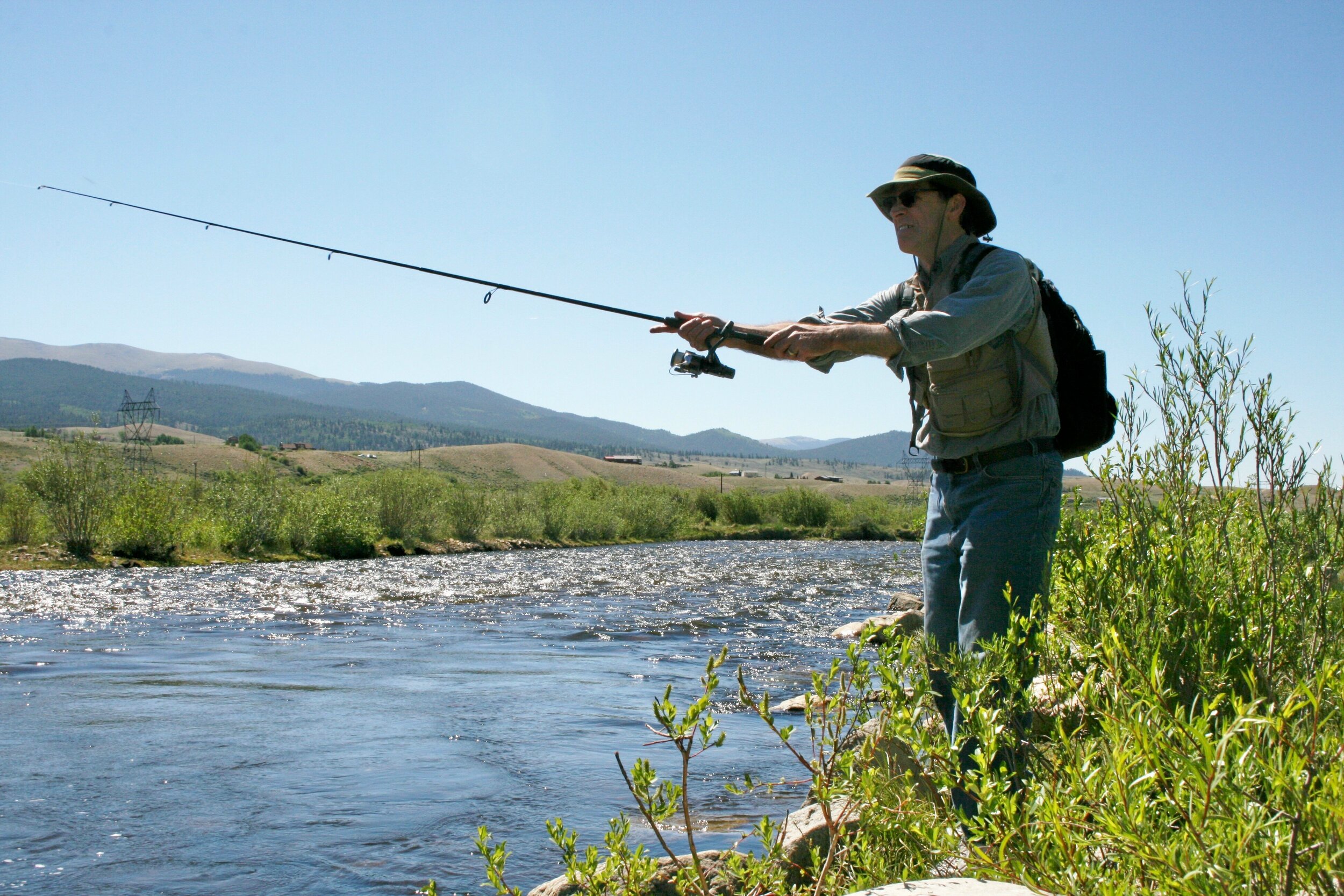An Interview with Robert Lowes
Photo by Saundra Lowes
Why did you choose An Honest Hunger for your book title?
The phrase comes from a poem titled “Perch.” It compares the fate of this small fish when it is caught by a human angler’s deceitful, wormed hook to the fate of being swallowed whole by a largemouth bass, “fellow fin, an honest hunger.” The phrase describes my life as a person of faith—specifically, as a Christian—who wants to follow God while remaining intellectually and emotionally honest. And like everyone else, I’m not always honest with myself or others. I think God’s hunger for us—I believe he loves us—is more honest than what we muster for him.
And a hunger for God, as I’m often reminded, is not just a quest for inner peace. People of faith hunger for a more just society, modeled after the kingdom of God. Sometimes that means marching in the streets. Blessed are the troublemakers. God hungers for us to do the right thing.
Many of your poems are written in traditional forms such as the sonnet, the sestina, and the villanelle. Why do you craft poems to fit such specific molds?
I have several reasons. I grew up reading formal poetry in addition to free verse, and I liked the musicality of meter and rhyme—sound patterns in general. I have come to appreciate how different forms create different poetic effects. The 14 lines of the sonnet embody compression—crushing a lump of coal into a diamond. And if you write an Italian sonnet, such as my own “Deep Space Photo,” you have the possibilities inherent in the octet, the first eight lines; and the sestet, the final six lines. The octet can ask a question, and the sestet can answer it. Or the octet can make an assertion, and the sestet can challenge it. The repetition of words in the sestina and lines in the villanelle can entrance the reader, and if you vary those words and lines and turn them on their heads, you can surprise the reader (provided you surprise yourself, as Robert Frost famously said). Finally, I find that confining myself to formal patterns paradoxically can liberate my imagination and wordplay. However, I also write free verse and prose poetry, so I’m not in one camp.
Who are some of your favorite poets living today?
A. E. Stallings is one of them. She approaches Frost in her mastery of form as well as her depth of feeling. If I go back to late poets whose lives overlap mine, I would add Czeslaw Milosz, who won the Nobel Prize in literature in 1980 for a body of work that merged the public (think political) and private realms in a Shakespearian way. While always delighting in old favorites such as Dickinson and Wordsworth, lately I have plowed more ancient ground with the likes of Sappho and Horace, who was a great raconteur.
How has your career as a journalist informed your approach to writing poetry?
Prose and poetry are on a spectrum. Journalism ought to sing at times like poetry. And poetry ought to have some of the logical landmarks of prose lest it be unintelligible. That said, I rely more heavily on my analytical left brain when I work as a reporter, and on my intuitive, creative right brain when I turn to poetry. But there’s crossover. Like a reporter, I instinctively fact-check my poems for accuracy when they venture into factual matters. Yes, an iPhone is soldered together, as I state in the eponymous poem.
A bit of my healthcare reporting has seeped into An Honest Hunger. There’s a poem about flipping through an illustrated medical dictionary. Several poems dwell on information technology, which reflect my extensive reporting on electronic health records and the computerization of medicine in general (see “Knowledge Worker Aces His Constellations”). On a more personal note, the sestina titled “Night Nurse” sprang from open-heart surgery to repair my leaky mitral valve.
You have organized poetry contests for high school students in St. Louis and led poetry workshops in their classes. Have you learned anything about poetry in these activities?
While some people may view poetry as an esoteric, otherworldly art form, I think every person is capable of poetry, even if it is just a single fresh description or figure of speech. I remember giving a high school English class an exercise in creating similes. How do you fill in the blank if I say, “As eager as….” One student raised her hand and said, “As eager as a new disease.” I was blown away. At the time, the world was battling an outbreak of the Ebola virus, and her simile struck me as a perfect way to describe a ravenous pathogen. By applauding one example of creativity in the classroom, I hope to encourage more of it.
One of your reviewers described An Honest Hunger as “laugh-out-loud funny.” Do you try to be funny?
Humor is a way of coping with life outside the Garden of Eden. It’s better than curling up in a fetal position.
What’s the best practical wisdom you've received from a fellow poet that has informed your work?
Always be reading great poets. They show the way forward. Their style invariably rubs off in small ways, which is inevitable, and yet they also give you the courage to be your own poet, develop your own style and voice. You build something new on top of the tradition. And somebody else builds on top of your work.
